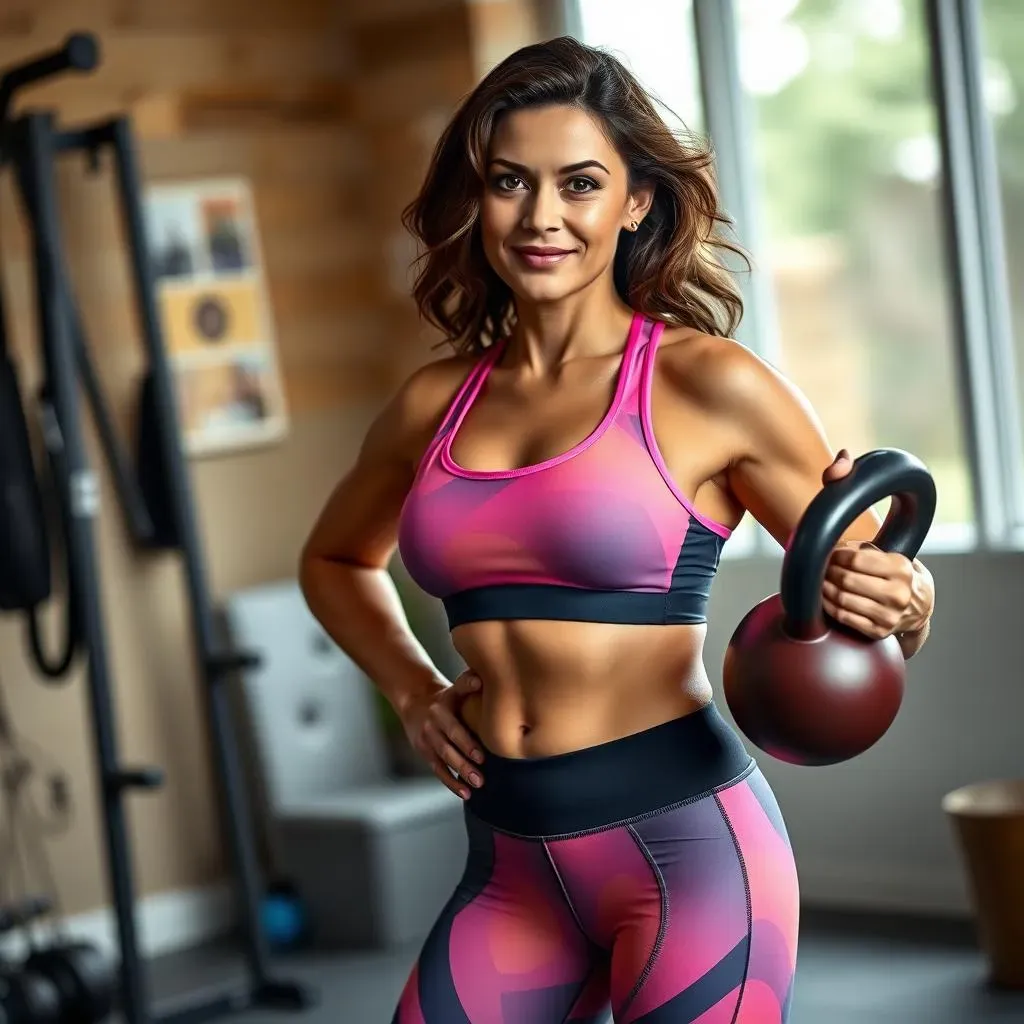Table of Contents
Ready to build a stronger, more sculpted backside without leaving your house? You've landed in the right spot! We're about to explore the world of butt workouts at home with kettlebells, and trust me, it's more exciting than it sounds. Forget boring squats and lunges; kettlebells add a whole new level of challenge and fun. These versatile weights aren't just for show; they're fantastic for engaging your core, improving balance, and of course, sculpting those glutes. I’m going to walk you through six killer kettlebell moves that'll have your glutes firing on all cylinders. We'll start with the swing, then move to single leg deadlifts, goblet squats, kettlebell deadlifts, and even some challenging variations with Bulgarian split squats and the Turkish get-up . Each exercise targets your glutes and other key muscle groups, so you're getting a full body workout. So, grab your kettlebell, find a spot in your living room, and let's get started. I’ll show you how to use these moves to build strength, stability, and yes, a fantastic-looking butt, all from the comfort of your home.
Kettlebell Swings for a Powerful Posterior
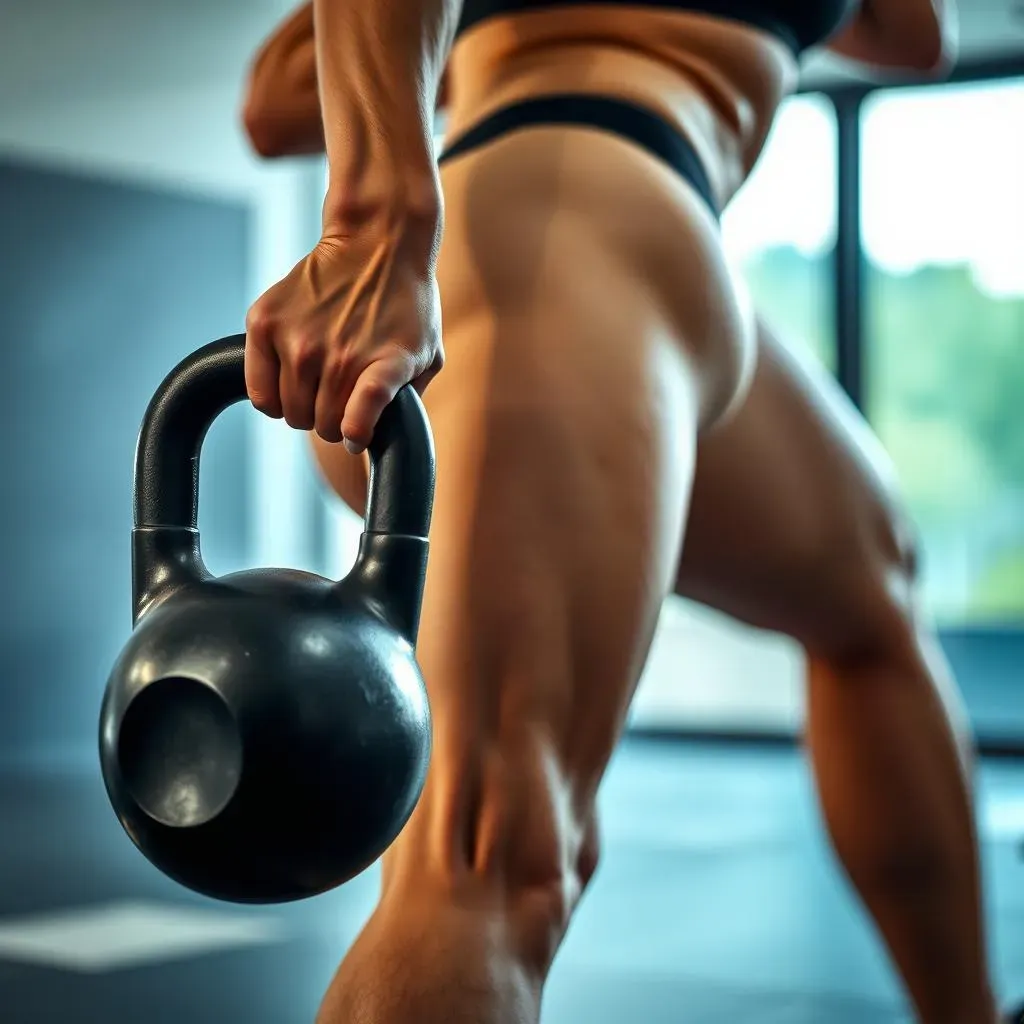
Kettlebell Swings for a Powerful Posterior
The Swing's Secret Sauce
Okay, so let's talk swings. I know, they look simple, but they're a powerhouse move for your glutes. It's not just about lifting a weight; it's about using your hips like a hinge. Think of it like a pendulum – your hips drive the kettlebell, not your arms. You’re not lifting with your back, you’re snapping your hips forward to power the swing. This explosive movement engages your glutes big time, plus you’re working your hamstrings and core. It's like a full-body party, but your butt's the guest of honor.
The key is to keep your back straight and your core tight. Imagine you're trying to squeeze a coin between your butt cheeks at the top of the swing. It sounds funny, but it really helps to activate the correct muscles. Don't go too heavy too soon; focus on getting the movement right first. A good swing isn’t about how high the kettlebell goes; it's about that powerful hip snap. It’s a bit like learning to ride a bike, you might wobble at first, but with practice, you'll be swinging like a pro in no time.
Mastering the Move
So, how do we make sure we're doing these swings right? First, stand with your feet shoulder-width apart, kettlebell in front of you. Hinge at your hips, push your butt back, and grab the kettlebell. Now, hike the kettlebell back between your legs and then powerfully thrust your hips forward, swinging the kettlebell up to about chest height. Your arms are just there for the ride, don’t try to lift with them. Think of it as a controlled explosion, not a slow, deliberate lift. It should feel like you're popping your hips forward with force.
Remember, it’s not a squat, it's a hip hinge. Keep that back straight, and don't let the kettlebell pull you forward. If you feel it in your lower back, then you’re not doing it right. Try doing the movement in front of a mirror, and see if you can see where you are doing it wrong. Start with sets of 10-15 reps and gradually increase as you get stronger. Consistency is key, so even if you're only doing a few swings a day, you’re making progress. It's not about being perfect right away, it's about improving each time.
Common Mistake | How to Fix It |
|---|---|
Squatting instead of hinging | Push your hips back, not down |
Lifting with your arms | Use your hips to drive the movement |
Rounding your back | Keep your core tight and back straight |
Swinging too high | Focus on the hip snap, not the height |
SingleLeg Kettlebell Deadlift: Balancing Strength and Stability
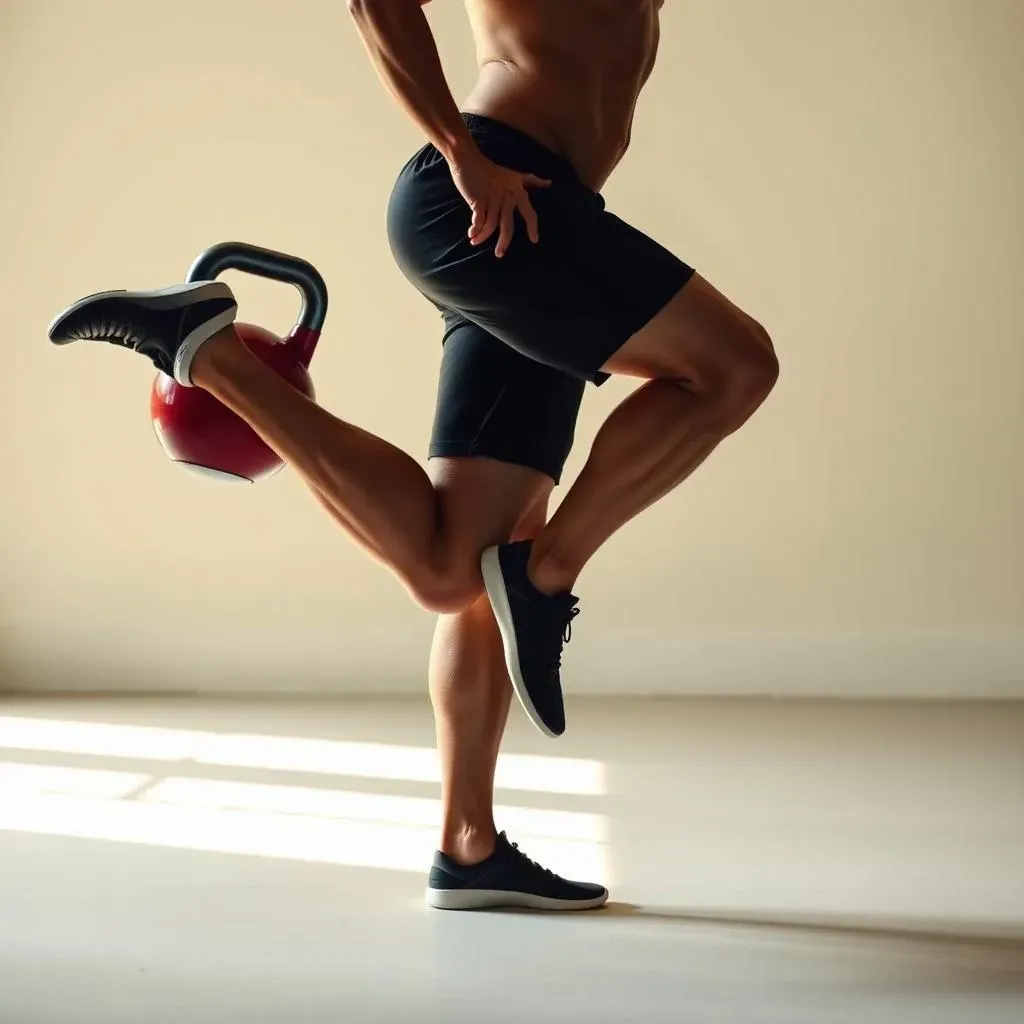
SingleLeg Kettlebell Deadlift: Balancing Strength and Stability
Why Go Single Leg?
Alright, let's talk about the single-leg kettlebell deadlift. This move isn't just about lifting weight; it's about control, balance, and seriously waking up those glutes. Think of it as a regular deadlift's cooler, more challenging cousin. When you stand on one leg, you're forcing your body to work harder to stabilize, which means your glutes, hamstrings, and core are all firing like crazy. It's not just about building strength; it's about building balance and coordination. Plus, it’s a great way to find out which side of your body is stronger – we all have a dominant side, this move will expose it. It’s like a personal challenge, and I’m all for that.
Now, I know what you might be thinking: "Single-leg? That sounds hard!" And yes, it can be tricky at first. But trust me, the benefits are worth it. You're not just getting a killer glute workout; you're also improving your overall athleticism and stability. This exercise is a game-changer for anyone looking to enhance their functional strength. It’s like upgrading your operating system, making your body more efficient and powerful. It’s a bit like learning to walk again, but with a kettlebell, and it’s way more fun.
How to Nail It
Okay, so let’s break down how to do this single-leg magic. Start by standing with the kettlebell in one hand. Then, shift your weight onto one leg and slowly hinge at your hips, lowering the kettlebell towards the floor while extending your free leg behind you. Your back should be straight, and you should feel a stretch in your hamstring. It’s almost like you’re trying to make a straight line from your head to your heel. The key is to keep your core tight and controlled, making sure you’re not wobbling all over the place. It's like a balancing act, but with the added bonus of a serious glute workout.
Don't try to go too low at first; focus on maintaining your balance and proper form. This isn’t a race, it’s about controlled movements. It's like learning to dance; you need to find your rhythm and flow. Keep your gaze focused on a point in front of you, this will help with the balance. Start with 6-8 reps per side and gradually increase as you get stronger and more confident. Remember, it's okay to wobble a bit – that's how you get stronger. It's like sharpening a knife; you need to practice to get it razor sharp.
Common Mistake | How to Fix It |
|---|---|
Rounding your back | Keep your core tight and back straight |
Wobbling too much | Focus on a point in front of you |
Using momentum | Lower slowly with control |
Not engaging the glutes | Squeeze your glutes as you come up |
Goblet Squats: The King of Kettlebell Butt Workouts at Home
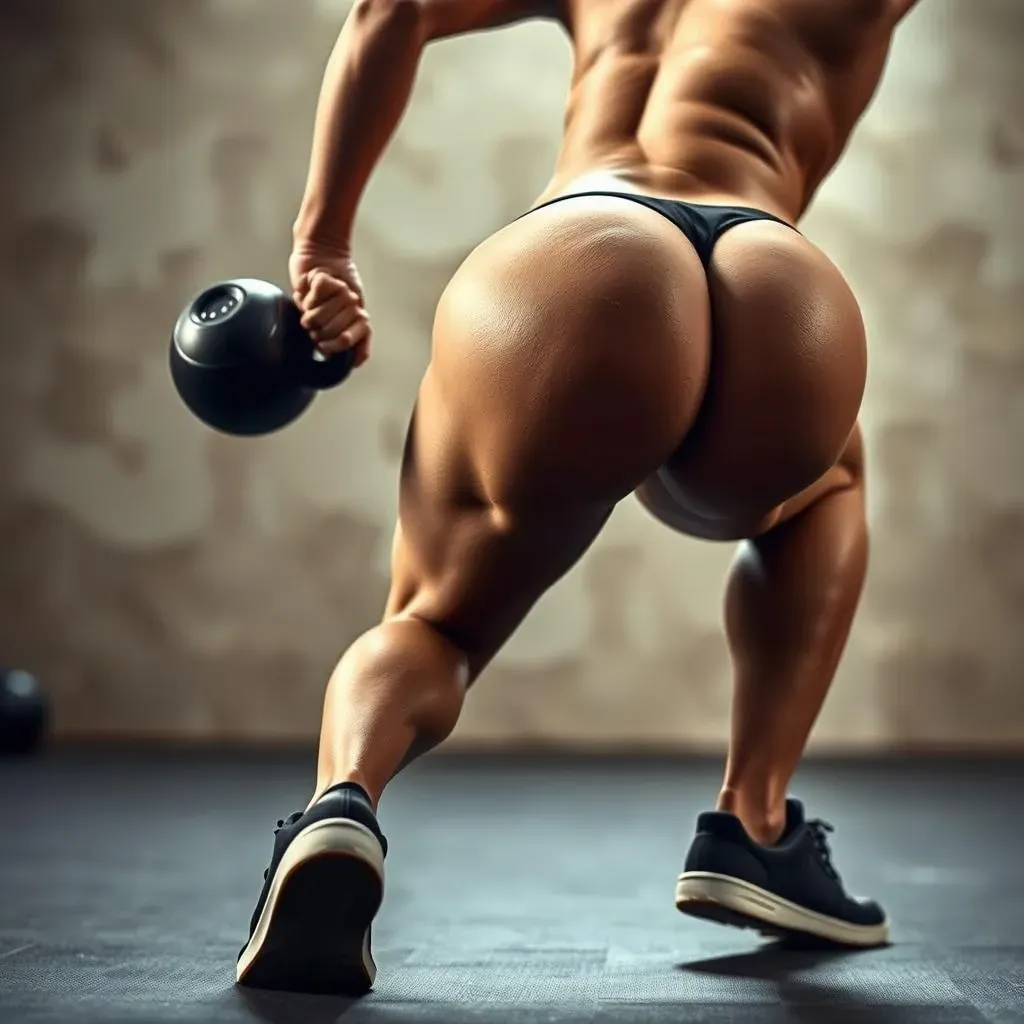
Goblet Squats: The King of Kettlebell Butt Workouts at Home
Why Goblet Squats Reign Supreme
Okay, so let's talk about goblet squats. I'm not kidding when I say they're the king of kettlebell butt workouts at home. They're not just another squat; they’re a game-changer. The way you hold the kettlebell in front of your chest forces you to engage your core and maintain an upright posture. It's like a built-in cheat code for perfect form. This means you're working your glutes, quads, and core all at once, making it an incredibly efficient exercise. It's not just about lifting; it's about making your whole body work together. It's like conducting an orchestra, but your body is the instrument, and your glutes are the star violinist.
What I love most about goblet squats is how accessible they are. Even if you're new to kettlebells, you can quickly pick up the movement. It's a fantastic way to learn proper squat mechanics before moving on to more complex exercises. Think of it as the foundation for all other squats. Plus, the front-loaded weight helps you get deeper into the squat, which means more activation of your glutes. It's like digging deeper to find hidden treasure, and in this case, the treasure is a stronger, more sculpted butt. It’s a bit like learning to ride a bike, you might wobble at first, but with practice you'll be squatting like a pro.
Perfecting Your Goblet Squat
So, how do we make sure we’re doing these goblet squats right? Grab your kettlebell and hold it close to your chest, like you're giving it a hug. Stand with your feet shoulder-width apart, toes slightly pointed out. Now, lower yourself into a squat, keeping your chest up and back straight. Your elbows should track inside your knees, and you should go as low as you comfortably can without losing good form. It's like sitting back into an imaginary chair, but with the added bonus of holding a kettlebell. The key is to control the movement and not rush it. It's about quality over quantity.
As you come up, squeeze your glutes at the top. This is where the magic happens, you’re working the butt muscles. Make sure your core is engaged throughout the entire movement; this will give you more stability and control. It’s like bracing yourself for a punch, but instead, you're building a stronger body. Start with sets of 8-12 reps, and gradually increase the weight as you get stronger. Remember, it's not about being perfect right away; it's about making progress each time. It’s like learning to play a new instrument, practice makes perfect.
Common Mistake | How to Fix It |
|---|---|
Rounding your back | Keep your chest up and back straight |
Letting your knees cave in | Push your knees out as you squat |
Not going deep enough | Lower until your thighs are parallel to the floor |
Rushing the movement | Control the movement, both up and down |
Kettlebell Deadlift and Other Great Butt Workouts at Home
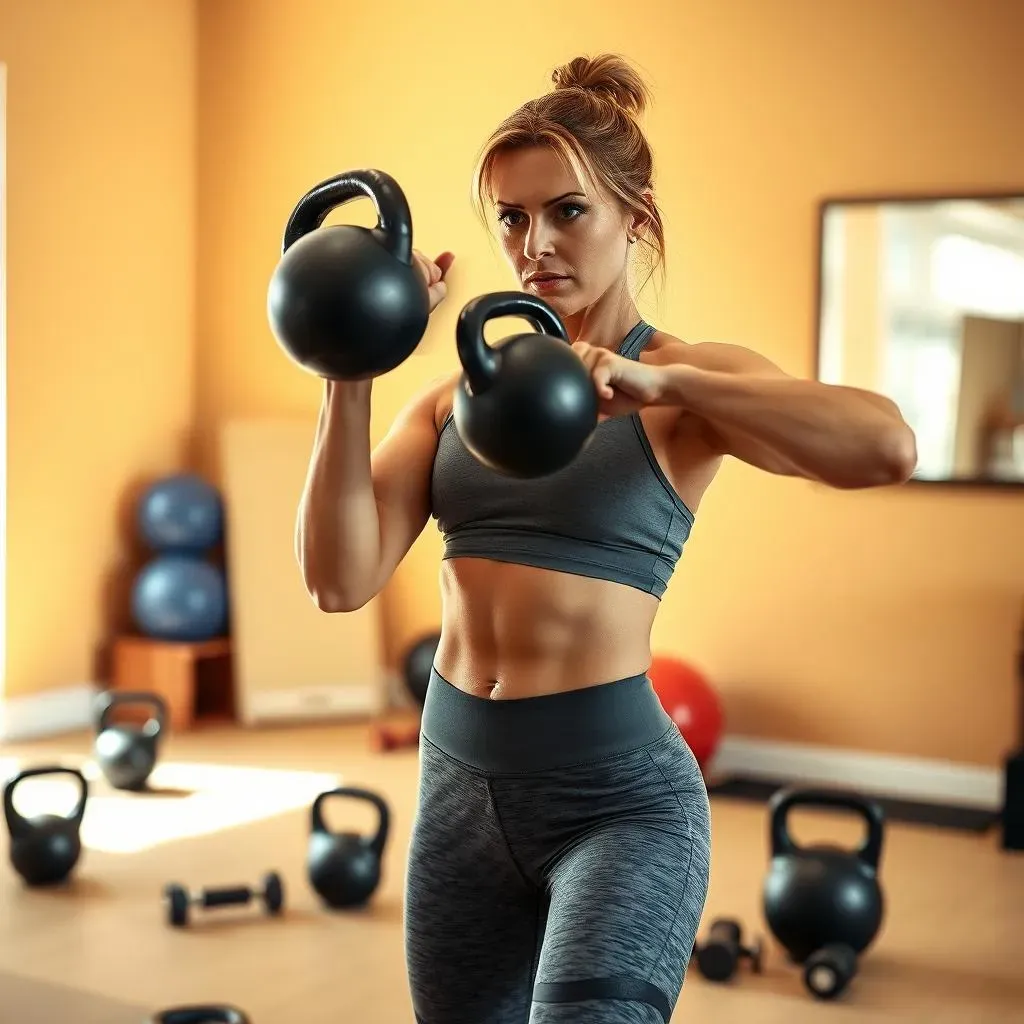
Kettlebell Deadlift and Other Great Butt Workouts at Home
The Classic Kettlebell Deadlift
Alright, let’s chat about the kettlebell deadlift. It might seem basic, but it’s a cornerstone for building a strong backside. Unlike the swing, where the movement is more dynamic, the deadlift is all about controlled power. You're picking up a weight from the floor, using your glutes and hamstrings to do the heavy lifting. It's like teaching your body to be a well-oiled machine, lifting with efficiency and strength. It’s not about how much weight you can lift, but how well you can lift it. This exercise will not only build your glutes but also strengthen your lower back, making it a win-win for your overall fitness. It’s like building a solid foundation for a house, you need to start with the basics to make it strong.
The kettlebell deadlift is also fantastic because it's so versatile. You can do it with one kettlebell or two, and you can vary your stance to target different muscles. It’s like a Swiss Army knife for your glutes, offering multiple ways to get the job done. You're not just lifting a weight; you're teaching your body to move properly, engaging the right muscles at the right time. This is what functional fitness is all about, making your body stronger and more capable in everyday life. It’s a bit like learning a new language, it opens up a whole new world of possibilities.
Beyond the Deadlift: Other Glute Builders
Now, I know what you’re thinking: “Is that it? Just deadlifts?” Absolutely not! There's a whole world of other great butt workouts at home with kettlebells that you should explore. Let's talk about the Bulgarian split squat with a kettlebell. This is where we take the classic lunge and make it even more challenging. By elevating your back foot, you’re forcing your front leg to do more of the work. This is a fantastic way to target those glutes and quads, and it also helps with your balance and stability. It’s like taking a regular hike and adding a steep incline, it’s harder but the views are better.
And then, there’s the Turkish get-up. This is a full-body exercise that will test your strength, stability, and coordination. It’s not just about building your butt; it’s about building a stronger, more resilient body. It’s like a dance, where you transition from the floor to standing, using your core, glutes, and shoulders. It's a complex move, but it’s incredibly rewarding. Start slow, focus on the movements, and you'll be amazed at how much you can achieve. It’s like learning a complex dance routine, it requires practice but it’s worth it. These exercises will not only build your butt but also transform the way you move.
Exercise | Why it's Great | Key Focus |
|---|---|---|
Kettlebell Deadlift | Builds posterior chain strength | Proper hip hinge, back straight |
Bulgarian Split Squat With Kettlebell | Targets glutes and quads, improves balance | Controlled movement, front foot stable |
Turkish Get-Up | Full-body strength and stability | Slow and controlled transitions |
